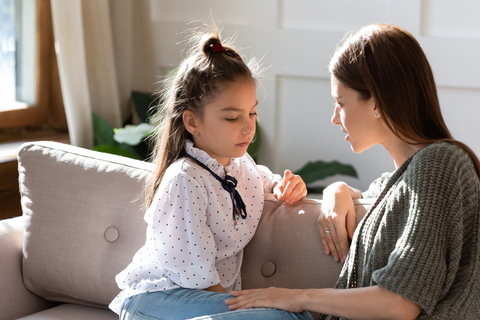Acts of violence seem to face our youth at every turn.
While such violence is difficult to process as adults, we also find that youth look to us for information and guidance on how to react.
We can help them feel safe by establishing a sense of normalcy and security and talking with them about their fears.
Suggestions for approaching these difficult conversations
- Make time to talk. Let their questions be your guide. Be patient. Watch for clues that they may want to talk, such as hovering around while you do the dishes or yard work. Young children may need concrete activities (such as drawing, picture books, or imaginative play) to help them identify and express their feelings.
- Validate their feelings. Explain that all feelings are okay when a tragedy occurs. Let children talk about their feelings, help put those feelings into perspective, and assist them in expressing their feelings appropriately.
- Keep your explanations developmentally appropriate.
- Early elementary-aged children need brief, simple information that should be balanced with reassurances that their programs, schools and homes are safe and that adults are there to protect them. Give simple examples of safety such as locked doors, playground supervision, and emergency drills.
- Upper elementary and early middle-grade children will be more vocal in asking questions about whether they truly are safe and what is being done at their program or school. They may need assistance separating reality from fantasy or false narratives. Discuss efforts to create safe spaces.
- Upper middle school and high school youth will have strong and varying opinions about the causes of violence and how to prevent it in society. Emphasize their role in maintaining safe spaces by following safety guidelines, communicating safety concerns to adult leaders, and accessing emotional support.
- Review safety procedures. Help children identify at least one adult to whom they can go if they feel threatened or at risk.
- Observe children’s emotional state. Changes in behavior, appetite and sleep patterns can indicate their level of anxiety or discomfort. Children who have past traumatic experiences or personal loss, suffer from depression or other mental illness, or have special needs may be at greater risk for more severe reactions. Seek the help of a mental health professional if you are at all concerned.
- Limit television and social media viewing of these events. Developmentally inappropriate information can cause anxiety or confusion, particularly in young children. Be mindful of conversations you have in front of children, even teenagers, and limit their exposure to vengeful, hateful, and angry comments that might be misunderstood.
- Maintain a normal routine. Regular schedules can be reassuring and promote physical health. Ensure that children get plenty of sleep, regular meals, and exercise. Encourage them to keep up with schoolwork and extracurricular activities, but don’t push them if they seem overwhelmed.
Emphasize these points when talking to young people about violence
- We all play a role in safety. Be observant and let an adult know if you see or hear something that makes you feel uncomfortable, nervous or frightened.
- There is a difference between reporting and tattling or gossiping. Information you share with a trusted adult may prevent harm.
- Sometimes people do bad things that hurt others. They may be unable to handle their anger, under the influence of drugs or alcohol, or suffering from mental illness. Adults work very hard to get help for those people. It is important for all of us to know how to get help if we feel really upset or angry and to stay away from drugs and alcohol as false coping mechanisms.
- Stay away from weapons. Tell an adult if you know someone has a gun or other weapon. Easy access to weapons is one of the leading risk factors for deadly violence.
- Violence is never a solution to personal problems. Youth can be part of the solution by participating in anti-violence programs, learning conflict mediation skills, and seeking help from a caring adult.
Take it further
- Gun violence in schools and When Bad Things Happen (Learning for Justice)
- Helping your children manage distress in the aftermath of a shooting and Managing your distress in the aftermath of a shooting (for adults) (American Psychological Association)
- Responding to Tragedy: Resources for educators and parents (Edutopia)
- Helping Kids Navigate Scary News Stories (PBS)
- Talking to Children: When Scary Things Happen | Spanish version
- Talking to Teens about Violence | Spanish version
Reviewed in 2022


